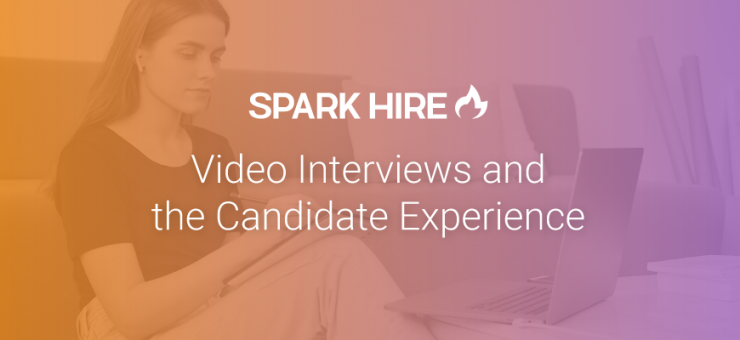Virtual interviews evolved immensely over the last few years. Initially, some viewed them as a “nice to have” or a new recruitment trend. But in recent months, they became a necessity for recruiters to keep processes moving forward.
Now, even as some necessity wears off, recruitment professionals refuse to give up the benefits of video interviews. In fact, in Cielo’s 2020 Future of Work Survey, the majority (82%) of hiring managers said they’ll continue interviewing candidates by video post-crisis.
The success of video interviews, however, is dependent on your ability to keep the candidate experience positive. Here’s how:
Create a structured process with one-way video interviews
Structured interview processes decrease unconscious bias by maintaining a fair and consistent process for every applicant. Especially in virtual recruitment, candidates may feel in the dark regarding how other candidates are treated and interviewed.
One-way video interviews, however, increase candidate confidence that there’s no unconscious bias in your process because they know others are answering the same questions in the same environment.
The use of one-way video interviews also creates structure for your team’s evaluation process. Because your entire team reviews it without needing to be in the same place at the same time, you can easily duplicate the review process for each candidate.
Personalize
Personalizing the video interview experience means reminding your candidates there’s a person on the other end of the video interviewing platform. The best way to personalize the experience for candidates is to create and implement candidate experience videos. Candidate experience videos play automatically at the beginning and end of a candidate’s interview.
For example, in an intro video, greet the candidates, introduce yourself, and thank them for applying to your organization. Briefly explain how the video interview helps them, as candidates, present themselves even better and sell themselves for the position. At the end of the interview, an outro video gives you an opportunity to personally thank the candidate and explain the next steps.
Another element of personalization you can add to your video interviewing process are video questions. These allow any member of your organization to ask candidates one of your interview questions on video. Asking questions on video gives candidates the added benefit of understanding the tone of your question. Then, they can react more naturally so the video interview feels more conversational.
Set them up for success
Many people feel aspects of their lives are currently beyond their control. The job search process has certainly been one of those things. Fear and uncertainty have the power to drive the candidate experience into the ground without you even aware it’s happening.
The virtual interview process presents many new uncertainties to candidates. One of the biggest is using unfamiliar software.
Set candidates up for success by outlining your hiring process from the beginning. Provide links to candidate resources provided by your video interviewing platform. This provides candidates the best information about completing their interview from the best resource. Be confident your candidates get the best service by looking for a platform with 24/7 technical support. Provide candidates with a direct link to that support so they can complete their interview any time that works best for them.
Keep communication open
Worldly stressors and job market fluctuations make it obvious why the candidate experience relies so heavily on clear and frequent communication. According to 82% of job seekers in CareerBuilder’s recent State of Recruiting and Onboarding Report, a clear timeline for the hiring process and being updated throughout that process is expected.
Although, because we have so many forms of communication, it often gets complicated. Hit each candidates’ favorite form of communication by using multiple platforms to engage with them throughout the virtual recruitment process.
For example, text first, then set up a call to further discuss details, next send a video message or interview to help candidates feel valued and informed.
By consciously building your video interviews around candidate engagement, you maintain a great candidate experience. Then, you can reach more candidates in less time, casting a wider net. Through these advantages, you’ll have a more diverse pool of applicants, an improved employer brand, and better hires for the organization as a whole.











